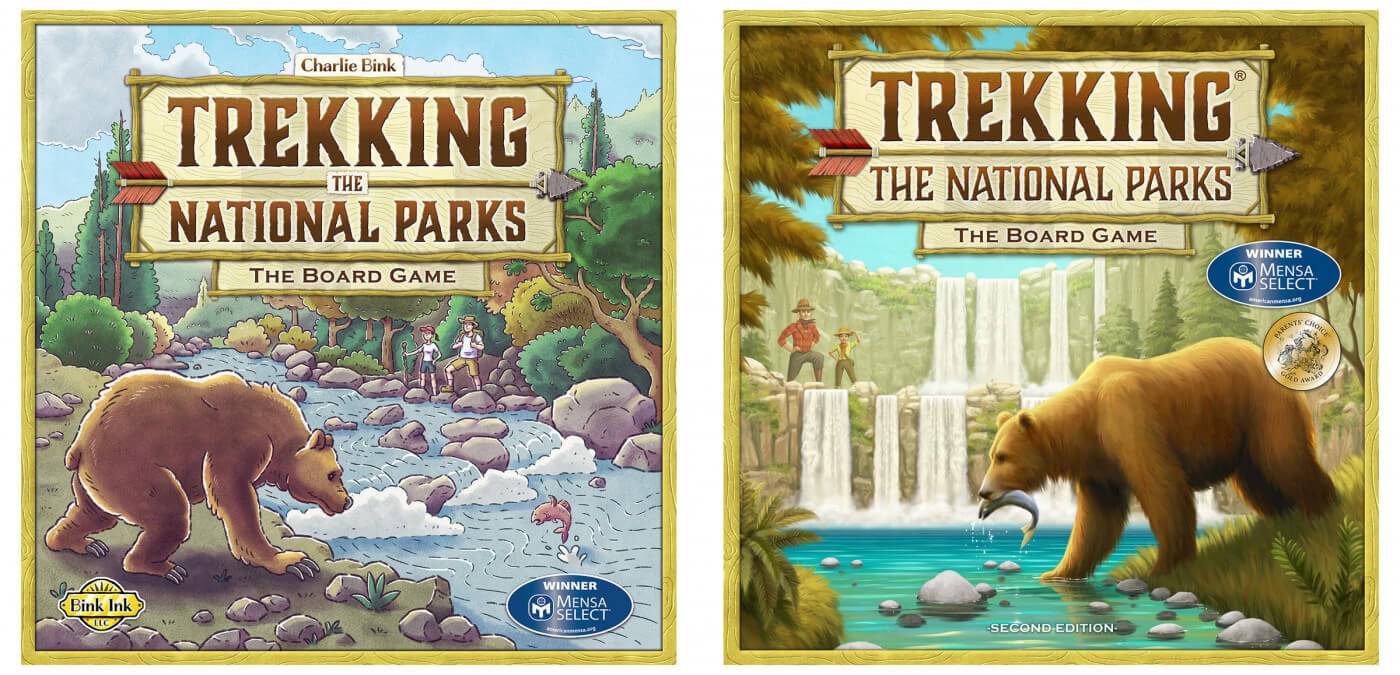There's a saying that goes "A game is never done, it's just published." Any artist, regardless of their field, can probably relate to this. You obsess over your creation for so long, but no matter how many tweaks you make there is always something else that could improve. Trekking the National Parks is no stranger to this story. Since the inception of my family's game, there have been many changes and improvements along the way (and there continue to be). In this article, I'll explain some of these changes and why we made them.
The Title
We originally thought about calling it The National Parks Adventure Game. It seemed appropriate, if not a little corny. I remember we once wrote down a long list of possible titles, and one of the entries was just the word TREKKING, in all caps. There was something very striking about this and saying Trekking the National Parks had a great ring to it. It soon became the winner.
The Map
If you are a park lover, you probably know that most of the national parks reside on the West Coast of the country. Of the current 63 parks, only 16 are east of Texas. This made creating a balanced game map very difficult. So early on we tested a version of the game that only featured parks on the western side of the country. This allowed for extra space between parks that would have otherwise been very close together (like the Mighty Five in Utah). We thought that maybe later we could make another game that featured the parks on the East Coast.
Fortunately, this version did not test well. People felt that it was aesthetically important to show ALL the parks on the map, so we made a full USA map for our first edition. However, this also posed many challenges. Trying to include all of the continental US and Alaska and Hawaii required warping the shape of the map in odd ways, as well as removing several locations players could visit. The map then updated again for the 2018 release of the second edition, where we thankfully balanced the shape of the map and cleaned it up to be more aesthetically pleasing.
Trails
In the first edition of TTNP, each trail had a little number printed on it representing the distance between locations. This was included because some trails were much longer than others, and it logically made sense that a player would have to expend more resources to cross longer distances. The number labels were a way to simulate this. However, it also made moving around the map more tedious, so we removed all of the number labels in the second edition and each trail simply counted as a distance of 1. This had a happy side effect of making the 1 trek cards more valuable than they were previously.
Airports
In the first edition of the game, there were 5 airport locations on the map. These could be used to fly long distances across the map. However, there was a lot of confusion about how their rules worked, and they didn't add a lot of thematic value to the game, so we removed them in the second edition. To make up for their loss, a 4 distance trek card was introduced to the trek card deck, which originally only had values of 1, 2 and 3.
Stones
The first edition of Trekking had 7 different colors of stones with 6 stones in each color. But we found that players felt less compelled to compete with one another to win color majorities since there were so many options available to them. So when we made the second edition we reduced the number of stone colors to 5 and also gave each color a staggered quantity and point value: 13 Yellow, 11 Red, 9 Black, 7 Green, 5 Blue. This allowed for more interesting decisions about which strategies to pursue.
Box Cover
I drew the original box cover. I'm not the best artist in the world, but I thought it had some charm to it. However, a game's box cover is the most important piece of art and will often dictate whether a customer is interested or not. When the time came to make a second edition, I felt that Robert Islas (a fantastic artist and good friend) would do the game much more justice than I ever could. So he reimagined my original cover art while keeping its spirit intact. I've always been very pleased with this update.
Love learning the stories behind board games? Check out our Behind the Game columns, like this one from game creator Lottie Hazell and her new game, Dog Park.











